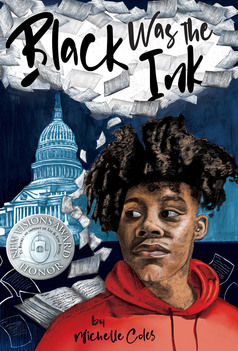
Many middle school teachers are skeptical of utilizing picture books in the upper-grade curriculum. While they have positive attitudes toward picture books in general, there can be hesitancy to add them to core curriculum. Taraneh M. Haghanikar, Associate Professor of Children’s Literature at the University of Northern Iowa, shares four tips on how to integrate picture books into upper-level curriculum.
There are three main reasons teachers balk at adding picture books to upper-grade curriculum:
- The Common Core State Standards (CCSS) require preparing all students for reading complex texts so they will be able to read and comprehend texts of increasing complexity for success in college, career, and more importantly throughout life. Therefore, teachers are concerned that picture books are not as complex as chapter books and therefore they do not meet the requirements of the standards.
- Older students may not find picture books with a short length, simple plots, and fewer characters as appealing as novels. Therefore, students may simply assume that they are reading below their level.
- Modern sophisticated picture books for older readers are very complex and demand higher levels of cognitive and aesthetic reading skills. To utilize these books in the middle or high school curriculum, teachers need to fully grasp the visual, cultural, artistic, and literary meaning of the book, and that does not always fit into their busy schedules.
Given these three concerns, it is essential to clarify our purpose in choosing picture books for older readers. Is that part of a more comprehensive lesson plan, perhaps as an entry point to conversations about race, social justice, and critical thinking? Or, is it to teach visual literacy to students? Or, is it for casual reading and entertainment for students, that allows respite from their rigid schedules? We don’t always have to read for academic purposes. To let students’ intellectual stimulation flow, it is important to let them read for pleasure. These special fun and light moments can be celebrated by reading a humorous picture book that doesn’t necessarily have a deep message.
Below are a few examples of how to integrate picture books in upper-level curriculum. Picture books intended for older readers provide critical thinking opportunities for all students to initiate conversations about complex topics such as immigration, social justice, race, poverty, emotional development, and human rights. To teach these topics in more tangible ways, we can focus on a picture book and then apply one of the visible thinking strategies (Harvard Project Zero, 2022) to make our students’ thinking visible.
Step 1. Picture book: Passage to Freedom: The Sugihara Story by Ken Mochizuki & Illustrated by Dom Lee (Pasaje a la libertad: La historia de Chiune Sugihara)
- Read/present Passage to Freedom to students.
- Choose one or two illustrations in the book.
- Cover the text and ask students these three questions, known as the visible thinking strategy (Harvard Project Zero, 2022):
– What do you think when you look at this picture?
– What questions or puzzles do you have?
– What does the picture make you want to explore?
Step 2. Wordless picture book: Erika’s Story by Ruth Vander Zee and Illustrated by Roberto Innocenti
- Read/present Erika’s Story to students.
- Continue the discussion with the 3‐2‐1 Bridge (Harvard Project Zero, 2022).
- Ask students to share three Thoughts/Ideas, two Questions, and one Analogy (between Passage to Freedom and Erika’s Story).
- Bridge: Ask students to explain how they connect Passage to Freedom to Erika’s Story.
Step 3. Chapter Book: Black Was the Ink by Michelle Coles and Illustrated by Justin Johnson
- Read Black Was the Ink to class or assign weekly reading.
- Ask students to share three Thoughts/Ideas, two Questions, and one Analogy (between Black Was the Ink and the picture books)
- Bridge: Ask students to explain how they connect Black Was the Ink and the picture books.
Step 4. Final thoughts: Discuss the concepts of freedom, resilience, and resolution in these books. How these concepts are different from Passage to Freedom to Erika’s Story and to Black Was the Ink.
There is a viable and effective instructional use for picture books in the upper-grade curriculum. Teachers who take the time and make the effort to accommodate the different needs of their students will likely find innovative teaching methods to utilize picture books in their lessons.

Taraneh M. Haghanikar is an associate professor of children’s literature at the University of Northern Iowa. She embraces teaching multicultural children’s literature as a viable way to promote culturally inclusive pedagogies in teacher education.



